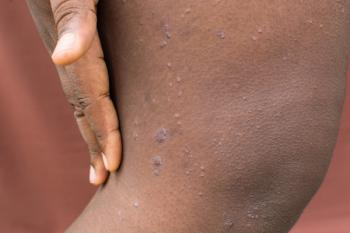
Type 2 Diabetes Associated With Reduced Survival in Patients With CRC
Patients with colorectal cancer (CRC) had lower 5-year survival if they had type 2 diabetes.
The 5-year survival of patients with
CRC makes up approximately 10% of the incidence of malignant tumors across the world. Patients in China have a high rate of advanced CRC due to limited public awareness and early screening. Both diabetes and T2D is also on the rise in China with approximately 8.2% of the population of the country having diabetes as of 2020 and approximately 90% of incidence of diabetes in China being attributed to T2D.2 This study aimed to assess what the relationship between prognosis of CRC and T2D was when focusing in on survival rates in patients with CRC who have had surgery.
Patients were included if they had confirmed colon or rectal cancer, had radical surgery, and had detailed clinical data from the First Affiliated Hospital of Huzhou University between January 2012 and January 2018. Patients were excluded if they had other malignant tumors, had a systemic infection, or had advanced intestinal cancer or irritable bowel syndrome. All patients had their data collected from the hospital medical record system. T2D was determined through blood glucose screening when the patient was admitted. Blood glucose was monitored every hour until there was stabilization.
Electronic medical records, follow-up records, and follow-up telephone information was used to collect survival data. Patients were followed-up via telephone at 3-month intervals through the first year after operation, which increased to 4-month intervals from the second to fifth year.
There were 312 samples screened, of which 62 patients had T2D and were classified into the comorbidity group. Patients were further separated into a “good” blood glucose group and a “poor” blood glucose group.
Patients in the comorbidity group had a 5-year overall survival (OS) rate of 82.23% compared with 94.40% and 90.32% of the non-comorbidity group before and after doing a propensity score match. The “good” blood glucose group also had a higher 5-year OS rate at 97.14% compared with 62.96% for the “poor” blood glucose group.
The 5-year mortality risk for the comorbidity group was 2.275 times higher compared with the noncomorbidity group in a univariate Cox regression analysis (HR, 2.275; 95% CI, 1.022-5.067). The multivariate regression analysis found a similar result, with the comorbidity group having a higher 5-year mortality risk compared with the noncomorbidity group (HR, 2.641; 95% CI, 1.125-6.202).
Blood glucose, body mass index, degree of differentiation, blood loss during the operation, infection after the operation, and hospital stay all were factors that affected the 5-year OS in the univariate regression analysis. This was confirmed in the multivariate Cox regression analysis with blood glucose (HR, 2.223; 95% CI, 1.385-3.599), body mass index of 25 kg/m2 or more (HR, 2.484; 95% CI, 1.063-5.808), low differentiation (HR, 3.370; 95% CI, 1.208-9.399) stage III and IV cancer (HR, 3.038; 95% CI, 1.077-8.565) and postoperative infection (HR, 2.671; 95% CI, 1.030-6.924) were all factors in 5-year OS in patients with CRC.
There were some limitations to this study. There is potential for selection bias due to the study taking place in a single-center and having a small sample. All possible factors could not be included in this study. Other factors should be tested in a multicenter analysis with a larger sample.
The researchers concluded that T2D was a factor involved in the 5-year OS of patients who have been diagnosed with CRC. Considering the overall health of the patient when treating CRC, including controlling blood glucose, should be the focus of treating patients with CRC through long-term survival and recovery from operations.
References
- Wu K, Shi Q, Xu Y, et al. Effects of T2DM on postoperative outcome of patients with colorectal cancer: a study on the relationship between blood glucose control and survival rate. Am J Cancer Res. 2024;14(4):1892-1903. doi:10.62347/HTRZ8589
- Liu J, Liu M, Chai Z, et al. Projected rapid growth in diabetes disease burden and economic burden in China: a spatio-temporal study from 2020 to 2030. Lancet Reg Health West Pac. 2023;33:100700. doi:10.1016/j.lanwpc.2023.100700
Newsletter
Stay ahead of policy, cost, and value—subscribe to AJMC for expert insights at the intersection of clinical care and health economics.








































